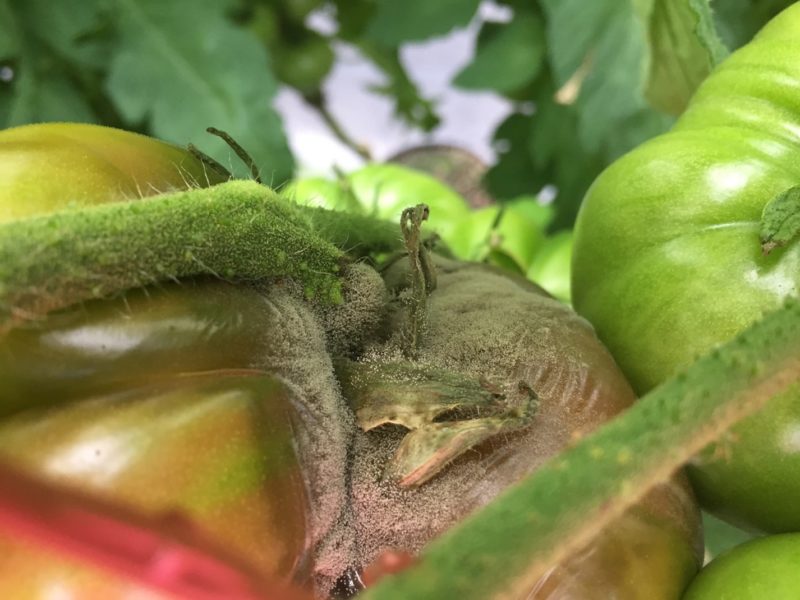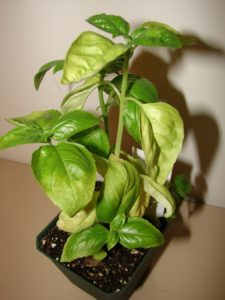Managing Light & Disease
Greenhouse production allows growers the freedom to grow year-round. Though these structures are controlled and mostly protected from outdoor environments, seasonal trends still exert some influence on crop growth. During winter months, conditions such as shorter days, lower light intensities and falling temperatures can contribute to a disease-promoting environment. Diseases, such as Botrytis blight and downy mildew, can begin
to creep in.
Growers should take advantage of all available tools to combat these issues. Using sanitation and environmental management practices is well understood, but how can lighting technology help? The use of supplementary lights increases light intensity, extends daylength or provides night interruption for photoperiod control and can provide extra heat. All of these variables play important roles when discussing disease control. This article will examine in detail how these strategies provide disease control assistance.
DOWNY MILDEW AND BOTRYTIS BLIGHT
Downy mildew diseases are caused by a variety of fungal pathogens. This group of diseases affects important CEA crops such as basil, spinach and cucumber. Mild chlorosis, or yellowing, of the leaves often serves as the first sign that downy mildew has infected a plant. Soon afterward, sporangia, or sporeproducing structures, appear on the undersides of leaves, and chlorotic patches can darken to purple or dark brown. Systemic symptoms may also manifest as general stunting and foliar distortion.

Downy mildew devastates crop yields and quality. While downy mildew of basil thrives in warmer conditions, many other disease-causing species can thrive in conditions commonly encountered in the fall and winter such as cool, wet environments. These conditions help promote the germination, growth and spread of this disease. Host-specific inoculum are ubiquitous in the environment, so disease prevention is key.
Botrytis blight pops up all year long as one of the most common fungal diseases. Whether in the greenhouse or on harvested crops in storage, decaying plant matter plays host to clusters of fuzzy gray spores. This infected material can then serve as a new source of inoculum and spread to actively growing, healthy tissue. Due to its preference for high humidity and temperatures below 86° F, Botrytis blight flourishes in temperate climates. Though most commonly seen as post-harvest issues on fruits and vegetables, developing crops can also be infected with Botrytis blight when plant tissues become damaged or die. Fall and winter conditions often produce slower, softer growth, leaving crops vulnerable to infection.
RELATIONSHIP BETWEEN LIGHT AND DISEASE
Winter is a dark time, with shorter day lengths and lower light during those days. Short day lengths have a dramatic effect on many plants’ physiology. Flower and fruit initiation are often tied to day length, but fungal pathogens also respond to changes in the light environment. For Botrytis, sclerotia (long-lasting survival structures) are formed exclusively during dark periods. Conidia (gray, fuzzy, spore-producing structures) production occurs during light periods. Sclerotia allow Botrytis to over winter in soil or in the environment, providing a potential future source of inoculum, especially in greenhouses with dirt or gravel floors. Additions of even small amounts of night-time light have been shown to prevent sclerotia development, though more research must be done to find more concrete strategies.

Light and dark periods also influence downy mildew. Previous research has shown that downy mildew requires a period of dark to begin sporulation, rather than the light periods for Botrytis. Researchers in Israel showed that the presence of as little as 10 micromoles of red light applied during nighttime hours provided significant inhibition of spore production in downy mildew-inoculated basil crops. The protective effect of red light decreased as plants grew larger and shaded lower leaves, preventing the red light from penetrating the canopy. This strategy holds promise for producers of young plants, when intracanopy shading is minimal.
Overall, night interruption provides positive effects for both downy mildew and Botrytis. For red light, choose fluorescent or lightemitting diode (LED) light sources. Dimmable LEDs provide strong flexibility, as they have the capability to provide intensities for both supplemental and photoperiodic light.
Moving beyond photoperiod, growers must also consider changing temperature conditions. Temperatures naturally decrease during fall and winter. With changing ambient temperatures, control strategies will also change. As air temperatures decrease, the dew point (the point when water begins to condense onto surfaces) falls. Water condenses on surfaces that are cooler than the air, such as the undersides of leaves or metal and glass
structural components.
These falling temperatures and increased moisture allow for increased growth and spread of both downy mildew and Botrytis blight. Just four hours or less of free moisture on leaf surfaces is enough for Botrytis to invade healthy tissue.
The addition of supplemental light provides an extra source of heat and increases light intensity as ambient light declines. Some lights, such as high-pressure sodium fixtures, release more heat to the production space in the direction of the plant canopy. Efficient LEDs release less heat to the plant canopy, but still provide some convective heat to the air within the production space. With their varying heat output and very different light spectrums, growers can choose a lighting source that makes the most sense for their operation’s needs.
Finally, light spectrum itself affects each of these pathogens differently. Studies have









 Video Library
Video Library 


















